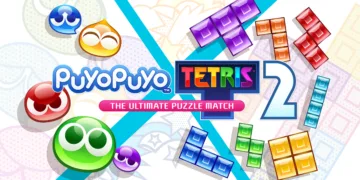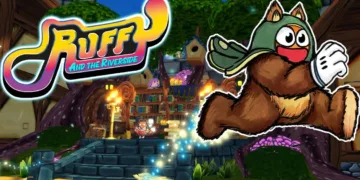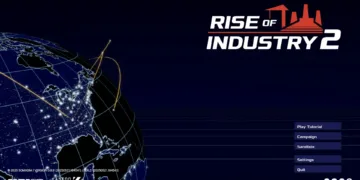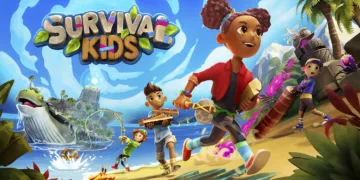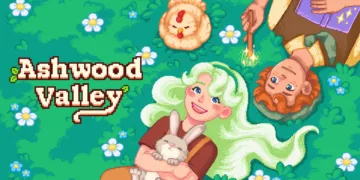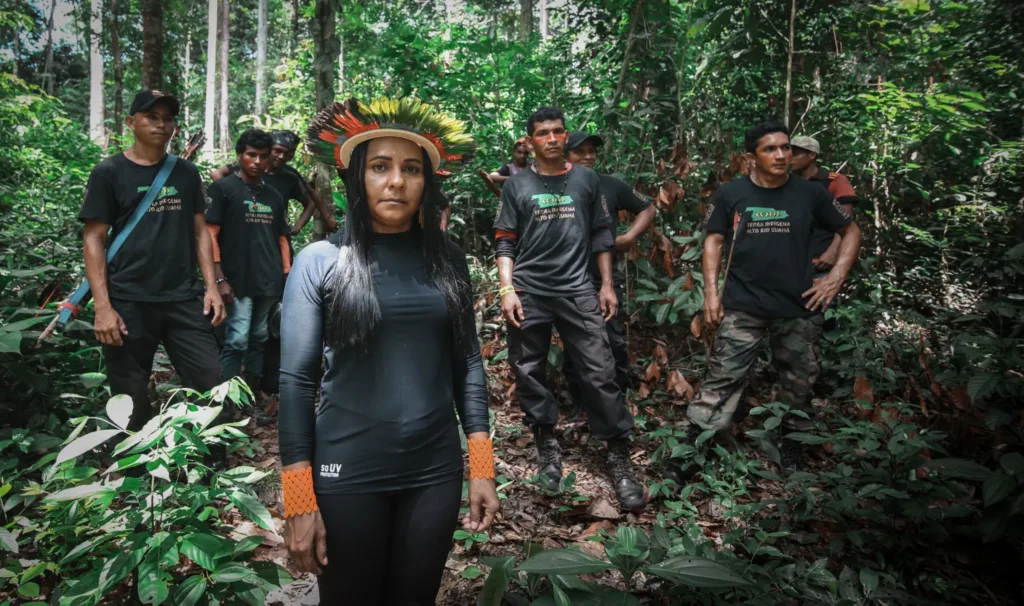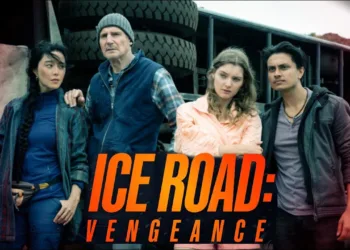The Brazilian Amazon serves as both sanctuary and battleground in “We Are Guardians,” a documentary that transforms environmental advocacy into a deeply personal exploration of cultural survival. Directors Edivan Guajajara, Chelsea Greene, and Rob Grobman have crafted a film that transcends typical eco-documentaries by embedding Indigenous perspectives at its core rather than treating them as exotic subjects.
With Leonardo DiCaprio’s production backing, this 2019-2022 chronicle captures the Bolsonaro era’s particularly aggressive assault on Indigenous territories, yet the film’s power lies in its refusal to present simple narratives of good versus evil. The documentary positions Indigenous communities not as noble savages fighting modernity, but as sophisticated political actors whose traditional ecological knowledge offers practical solutions to global climate collapse.
This framing challenges Western audiences to reconsider their assumptions about progress and development, while simultaneously making the Amazon crisis accessible through intimate human stories rather than abstract statistics. The film’s trilingual approach—Portuguese, Indigenous languages, and English—reflects its commitment to authentic cross-cultural dialogue, where translation becomes both literal and metaphorical bridge-building.
Portraits of Resistance Across Cultural Divides
The film’s greatest strength lies in its character-driven approach, which reveals how environmental destruction manifests differently across economic and cultural boundaries. Marçal Guajajara emerges as a figure who embodies the intersection of traditional Indigenous leadership and modern guerrilla tactics. His work protecting the uncontacted Awá people demonstrates how Indigenous communities practice a form of cultural preservation that extends beyond their own immediate interests—a concept that challenges Western individualism while offering a model for collective environmental stewardship.
Puyr Tembé’s political activism represents another form of cultural translation, as she moves between Indigenous territories and urban political centers, adapting traditional advocacy methods to contemporary democratic systems. Her presence at COP26 exposes the performative nature of international environmental conferences, where Indigenous voices become photo opportunities rather than policy influences. This dynamic illustrates how global environmental movements often appropriate Indigenous symbolism while ignoring Indigenous agency.
The film’s treatment of logger Valdir Duarte reveals the complexity of environmental destruction rooted in economic desperation. His half-century career in illegal logging, beginning at age eight, demonstrates how poverty perpetuates environmental destruction across generations. The documentary avoids condescending toward Duarte while maintaining its environmental stance, instead showing how inadequate social safety nets force individuals into destroying the very ecosystems their survival depends upon.
Tadeu Fernandes represents yet another perspective—the wealthy landowner whose conservation efforts face constant illegal encroachment. His decades-long battle with government bureaucracy illustrates how environmental protection often requires resources and persistence that few possess, while his ecological sanctuary model offers a potential framework for private conservation initiatives.
Visual Language as Cultural Translation
The documentary’s aesthetic choices function as sophisticated cultural translation, where sound design becomes a primary storytelling tool. The contrast between forest birdsong and chainsaw noise creates an auditory representation of cultural conflict that transcends language barriers. This sonic juxtaposition allows international audiences to experience the violence of deforestation viscerally rather than intellectually, transforming abstract environmental statistics into immediate emotional understanding.
The film’s cinematography employs aerial perspectives to reveal deforestation patterns that mirror the strategic thinking of both Indigenous guardians and illegal loggers. These overhead shots function as tactical maps, showing how environmental destruction follows predictable patterns that Indigenous communities have learned to anticipate and counter. The intimate family moments filmed within Indigenous homes provide necessary counterpoint to the conflict footage, establishing the domestic stakes of environmental destruction.
Visual data integration through graphics and maps serves dual purposes: educating international audiences about deforestation scales while providing Indigenous communities with documentation tools for their advocacy work. The archival footage of Bolsonaro-era policies and protests contextualizes the film’s events within broader political movements, showing how environmental destruction connects to authoritarian governance patterns globally.
The river confrontation over açaí berries exemplifies the film’s approach to conflict resolution, where traditional Indigenous negotiation methods achieve peaceful outcomes that formal legal systems have failed to produce. This scene demonstrates practical alternatives to punitive environmental enforcement, suggesting that Indigenous governance models might offer scalable solutions to resource conflicts.
Global Stakes, Local Solutions
The documentary’s political timing—spanning the Bolsonaro presidency and Lula’s electoral victory—provides a case study in how environmental policy shifts affect Indigenous communities immediately and globally over time. The film shows how Indigenous rights and environmental protection represent interconnected struggles rather than separate issues, challenging policy frameworks that treat them as competing interests.
The Amazon’s role as global climate regulator receives treatment that balances scientific explanation with Indigenous cosmological understanding, where forest preservation serves both practical and spiritual functions. This dual framing allows the film to speak to secular environmental movements while respecting Indigenous worldviews, creating space for multiple knowledge systems to coexist.
The collaborative directorial approach—pairing Indigenous activist Edivan Guajajara with environmental filmmakers Greene and Grobman—models the kind of cross-cultural cooperation the film advocates. This partnership demonstrates how environmental documentaries can avoid extractive filmmaking practices while maintaining production values that reach international audiences.
The film’s effectiveness as advocacy stems from its refusal to offer simple solutions to complex problems. Instead of ending with typical calls to action, it suggests that environmental protection requires fundamental shifts in how societies organize economic and political relationships. The Indigenous communities featured offer working models for these alternative arrangements, making the film’s political implications as significant as its environmental message.
“We Are Guardians” is a documentary that premiered in 2023. The film follows Indigenous forest guardians in the Brazilian Amazon as they fight to protect their land from deforestation and illegal activities. The documentary is available on Netflix in Latin America and on Prime Video in Germany and the United Kingdom. There are also theatrical screenings in various cities across the United States and Canada.
Full Credits
Director: Edivan Guajajara, Chelsea Greene, Rob Grobman
Writers: Edivan Guajajara, Chelsea Greene, Rob Grobman
Producers: Fisher Stevens, Maura Anderson, Chelsea Greene, Zak Kilberg
Executive Producers: Leonardo DiCaprio, Phillip Watson, Jennifer Davisson, Christopher Gebhardt, Randy Gebhardt, Bruce Cohen, Edivan Guajajara, Flay Guajajara, Erisvan Bone Guajajara, Rob Grobman, Iz Web, Luiza Krapels, Marco Krapels
Cast: Valdir Duarte, Marcal Guajajara, Tadeu Fernandes, Puyr Tembe
Director of Photography (Cinematographer): Edivan Guajajara, Chelsea Greene, Rob Grobman, Maura Anderson, Zak Kilberg, Fisher Stevens
Editors: Atanas Georgiev, Carla Roda, Rob Grobman, Chelsea Greene
Composer: Roahn Hylton, Jacob Yoffee, Pupillo
The Review
We Are Guardians
"We Are Guardians" succeeds as both environmental documentary and cultural bridge-building exercise, offering nuanced perspectives on Amazon deforestation while centering Indigenous voices authentically. The film's strength lies in humanizing all participants without moral relativism, creating empathy for complex situations while maintaining clear environmental advocacy. Though it occasionally struggles to balance intimate character studies with broader political context, the collaborative directorial approach and sophisticated visual storytelling make this essential viewing for understanding contemporary environmental resistance.
PROS
- Authentic Indigenous perspectives and collaborative filmmaking
- Sophisticated visual storytelling and sound design
- Humanizes all participants without losing environmental focus
- Effective cross-cultural translation of complex issues
- Strong character-driven narrative approach
CONS
- Sometimes uneven pacing between personal and political content
- Limited solutions offered to systemic problems
- Occasional information overload with graphics and data
- Relies heavily on audience's existing environmental awareness





























